Review: Mondraker’s 2020 F-Podium RR is a Rapid XC Racer with Great Handling
The Mondraker F-Podium RR is an all-new cross-country race bike from the company best known for popularising the long, slack and low geometry with its longer travel models like the Foxy and Dune. But there’s clearly XC blood in the Spanish company (it has already produced a hardtail) and the new F-Podium RR is designed around 29” wheels, 100mm front and rear travel, a light and stiff carbon fiber frame, swingarm and rocker linkage, and the sort of progressive geometry you’d expect given this company’s reputation and the current trend for XC race bikes. But above all else, it's designed to be fast, seriously fast.
The F-Podium comes in several builds priced from €4,999 to €10,999, but showing a modicum of conservatism, I’ve been riding the second-tier €8,999 F-Podium RR. It’s packing some serious kit, including a Fox 32 Step Cast FIT4 fork and Float DPS shock, Shimano XTR M9100 12-speed transmission and brakes, DT Swiss XRC1200 Spline wheels and carbon fiber handlebar and seat post. There are four sizes, and the size large pictured weighed a scant 22.10lb on the scales.
Mondraker F-Podium RR
Intended use: XC
Travel: 100mm
Wheel size: 29"
Frame construction: Stealth Air Full Carbon
Suspension: XCO Optimized Zero Suspension
Head angle: 68º
Reach: 480mm size Large
Sizes: S, M, L, XL
Weight: 22.1lb (10 kg) - size large, w/o pedals
Price: €8,999
More info: www.mondraker.com
Intended use: XC
Travel: 100mm
Wheel size: 29"
Frame construction: Stealth Air Full Carbon
Suspension: XCO Optimized Zero Suspension
Head angle: 68º
Reach: 480mm size Large
Sizes: S, M, L, XL
Weight: 22.1lb (10 kg) - size large, w/o pedals
Price: €8,999
More info: www.mondraker.com
Contents
Construction and Features
Let me start by being subjective: this is a bloody good looking bike with a very striking presence. I love the scalpel blade sharp profile of the top tube, the seat stays line flowing into the top tube via a smoothly moulded rocker linkage, the kinked head tube junction, the split seat tube accommodating the shock. Disagree with me at your peril. And it looks quick too, which is good for a psychological boost before you put foot to pedal.
The bike has been in development for several years, and Mondraker used that time wisely to design a feature-packed frame that gets all the details spot on. It incorporates their Forward Geometry and dual-link Zero rear suspension and is carbon from front to back, including the rocker linkage. During the early phase of the F-Podium development, Mondraker worked with German aerospace company 3C to lay a lot of the foundations for the frame design before completing the project themselves. It’s manufactured by the same company that makes the Foxy Carbon using the same "Stealth Air Technology” process, and there are two versions - the top-end RR SL model that uses a more complex carbon layup to shed weight, while the rest of the range use a more modest carbon layup.
Carbon fiber is loved by bike designers because it lets you tune the weight and stiffness. Mondraker trialled many different carbon layups for the front and rear triangle in the pursuit of the right amount of stiffness. The goal was to create a frame that was stiff without being harsh, one that offered a degree of compliance, and they actually took a bit of a weight penalty by not pursuing the absolute stiffest possible frame (more stiffness usually means more high-modulus carbon which is lighter). Still, with a claimed frame weight of 1,980g without hardware, it's pretty damn light.
All the bearings are oversized and sealed, the 31.6mm seat tube accommodates a dropper post, there’s full internal cable routing, neatly moulded frame protector rubber material on the chainstay and down tube, space for a bottle cage on the down tube with a choice of two positions, and a threaded bottom bracket. The top tube is low slung for good standover with a short seat tube strut and an external seat clamp. You’ve got Boost spacing, of course, and yup, there’s no way of fitting a front mech, it’s 1x all the way.
Let me start by being subjective: this is a bloody good looking bike with a very striking presence. I love the scalpel blade sharp profile of the top tube, the seat stays line flowing into the top tube via a smoothly moulded rocker linkage, the kinked head tube junction, the split seat tube accommodating the shock. Disagree with me at your peril. And it looks quick too, which is good for a psychological boost before you put foot to pedal.
The bike has been in development for several years, and Mondraker used that time wisely to design a feature-packed frame that gets all the details spot on. It incorporates their Forward Geometry and dual-link Zero rear suspension and is carbon from front to back, including the rocker linkage. During the early phase of the F-Podium development, Mondraker worked with German aerospace company 3C to lay a lot of the foundations for the frame design before completing the project themselves. It’s manufactured by the same company that makes the Foxy Carbon using the same "Stealth Air Technology” process, and there are two versions - the top-end RR SL model that uses a more complex carbon layup to shed weight, while the rest of the range use a more modest carbon layup.
Carbon fiber is loved by bike designers because it lets you tune the weight and stiffness. Mondraker trialled many different carbon layups for the front and rear triangle in the pursuit of the right amount of stiffness. The goal was to create a frame that was stiff without being harsh, one that offered a degree of compliance, and they actually took a bit of a weight penalty by not pursuing the absolute stiffest possible frame (more stiffness usually means more high-modulus carbon which is lighter). Still, with a claimed frame weight of 1,980g without hardware, it's pretty damn light.
All the bearings are oversized and sealed, the 31.6mm seat tube accommodates a dropper post, there’s full internal cable routing, neatly moulded frame protector rubber material on the chainstay and down tube, space for a bottle cage on the down tube with a choice of two positions, and a threaded bottom bracket. The top tube is low slung for good standover with a short seat tube strut and an external seat clamp. You’ve got Boost spacing, of course, and yup, there’s no way of fitting a front mech, it’s 1x all the way.
Geometry & Sizing
Geometry is the big story in mountain biking right now, and it’s not just long-travel bikes; XC race bikes are getting in on the action as well. Bikes like the Yeti SB100, BMC FourStroke, and Specialized Epic, all have thoroughly modern and progressive suspension that are a far cry from the steep and short XC race bikes of a decade ago. It’s a good thing for paid professionals, with World Cup XC courses generally getting more technical and placing more demands on the bike being capable when it gets rowdy, but it also benefits regular riders who like the low weight and pedalling efficiency of XC race bikes for fast trail riding and like to have fun on the descents too. Some might call it downcountry, I just call it mountain biking.
With a decade of its rider-forward geometry experience, Mondraker duly applied as much of the long, low and slack philosophy to the new F-Podium as they felt the target customer and racer would accept. The pictured size large stands out from the crowd with a 480mm reach, 68-degree head angle, 76.5-degree seat angle and 432mm chainstays. As has become popular, a 44mm offset fork has been employed. To keep the cockpit length in check, the bikes are rolling out of the factory with 50 and 60mm short stems. Such a stubby stem is going to challenge some traditional XC racers' preconceptions about bike setup for sure - if that's you, just give it a try first.
Geometry is the big story in mountain biking right now, and it’s not just long-travel bikes; XC race bikes are getting in on the action as well. Bikes like the Yeti SB100, BMC FourStroke, and Specialized Epic, all have thoroughly modern and progressive suspension that are a far cry from the steep and short XC race bikes of a decade ago. It’s a good thing for paid professionals, with World Cup XC courses generally getting more technical and placing more demands on the bike being capable when it gets rowdy, but it also benefits regular riders who like the low weight and pedalling efficiency of XC race bikes for fast trail riding and like to have fun on the descents too. Some might call it downcountry, I just call it mountain biking.
With a decade of its rider-forward geometry experience, Mondraker duly applied as much of the long, low and slack philosophy to the new F-Podium as they felt the target customer and racer would accept. The pictured size large stands out from the crowd with a 480mm reach, 68-degree head angle, 76.5-degree seat angle and 432mm chainstays. As has become popular, a 44mm offset fork has been employed. To keep the cockpit length in check, the bikes are rolling out of the factory with 50 and 60mm short stems. Such a stubby stem is going to challenge some traditional XC racers' preconceptions about bike setup for sure - if that's you, just give it a try first.
Suspension Design
Mondraker has optimized its tried-and-tested Zero Suspension System from its longer travel bikes in the new F-Podium. It’s a dual-link design with a carbon fiber linkage driving the shock through a tunnel in the seat tube, and a lower link machined in aluminum rotating just behind the bottom bracket. Mondraker says it could have used a simpler suspension design to save weight, but it felt the performance benefits of its Zero design were hard to ignore for XC racing, so it took the weight penalty of its dual-link design. It’s all very neatly packaged in a frame design that does well to disguise the suspension components. They've also incorporated a small mudguard to protect the shock from mud and grit being flung at it by the rear wheel.
The Zero Suspension system has been used by Mondraker for many years now. It’s a patented design which works by sandwiching the rear shock between the upper and lower linkage. The company claims that this reduces stress loads on the frame, so subsequently it can be made lighter as it doesn’t need as much reinforcing material. It's also used to provide the desired suspension performance and handling characteristic that Mondraker is looking for.
While 100mm of travel is not a lot to work with, Mondraker has worked hard to adapt its suspension design for the needs of XC racers who crave pedalling efficiency while also ensuring it’s very capable and delivers a Mondraker ride characteristic. The shock is being compressed from the top and the bottom, balancing small bump sensitivity and big hit control. The anti-squat is high, around 130% at the recommended 25% sag to provide the stable pedaling platform, and it decreases as the suspension progresses through its travel.
Mondraker worked with Fox to develop a custom tune shock, and after extensive testing settled on a “firm compression, light rebound and a small volume air chamber for a progressive feel.” The goal was to appease XC racers who demand a firm pedalling platform for smashing up climbs, but to also add in a bunch more flexibility for non-racers. The frame takes a metric trunnion shock 185x47.5mm with a 0.2 volume spacer. Fox's handlebar-remote lockout system is connected to the 32 Step-Cast fork and DPS2 shock for those moments where an extra-firm pedalling platform is preferred.
Mondraker has optimized its tried-and-tested Zero Suspension System from its longer travel bikes in the new F-Podium. It’s a dual-link design with a carbon fiber linkage driving the shock through a tunnel in the seat tube, and a lower link machined in aluminum rotating just behind the bottom bracket. Mondraker says it could have used a simpler suspension design to save weight, but it felt the performance benefits of its Zero design were hard to ignore for XC racing, so it took the weight penalty of its dual-link design. It’s all very neatly packaged in a frame design that does well to disguise the suspension components. They've also incorporated a small mudguard to protect the shock from mud and grit being flung at it by the rear wheel.
The Zero Suspension system has been used by Mondraker for many years now. It’s a patented design which works by sandwiching the rear shock between the upper and lower linkage. The company claims that this reduces stress loads on the frame, so subsequently it can be made lighter as it doesn’t need as much reinforcing material. It's also used to provide the desired suspension performance and handling characteristic that Mondraker is looking for.
While 100mm of travel is not a lot to work with, Mondraker has worked hard to adapt its suspension design for the needs of XC racers who crave pedalling efficiency while also ensuring it’s very capable and delivers a Mondraker ride characteristic. The shock is being compressed from the top and the bottom, balancing small bump sensitivity and big hit control. The anti-squat is high, around 130% at the recommended 25% sag to provide the stable pedaling platform, and it decreases as the suspension progresses through its travel.
Mondraker worked with Fox to develop a custom tune shock, and after extensive testing settled on a “firm compression, light rebound and a small volume air chamber for a progressive feel.” The goal was to appease XC racers who demand a firm pedalling platform for smashing up climbs, but to also add in a bunch more flexibility for non-racers. The frame takes a metric trunnion shock 185x47.5mm with a 0.2 volume spacer. Fox's handlebar-remote lockout system is connected to the 32 Step-Cast fork and DPS2 shock for those moments where an extra-firm pedalling platform is preferred.
Specifications
| Specifications | ||
| Release Date | 2019 | |
| Price | $8999 | |
| Travel | 100mm | |
| Rear Shock | Fox Float DPS SV EVOL Factory Kashima, 185x47,5mm | |
| Fork | Fox 32 29 Float FIT4 EVOL Step Cast Factory Kashima, 100mm | |
| Headset | Onoff Saturn tapered | |
| Cassette | Shimano XTR CS-M9100 10-51T Hyperglide+, 12s | |
| Crankarms | Rotor Inpower with powermeter, 12s, Boost axle, Direct Mount chain ring, S size: 170mm, M/L/XL size: 175mm | |
| Bottom Bracket | Rotor BSA 30mm, sealed bearings, 73mm | |
| Rear Derailleur | Shimano XTR RD-M9100, patilla larga SGS, Shadow Plus, 12s | |
| Chain | Shimano XTR CS-M9100, 12s | |
| Shifter Pods | Shimano XTR SL-9100, Rapid Fire Plus, 12s | |
| Handlebar | Onoff Helium Carbon 0.2, rise: 4.8mm, width: 760mm, 9° backsweep, 0° upsweep, 31.8mm | |
| Stem | 6061 T6 Alloy, 31.8mm, rise: +/-5°, length: sizes S/M: 50mm, size L/XL: 60mm | |
| Grips | Onoff Desert, 1lock-on | |
| Brakes | Shimano XTR, | |
| Wheelset | DT Swiss XRC 1200 Spline Carbon | |
| Tires | Maxxis Rekon Race 29x2.25, EXO protection | |
| Seat | Fizik Antares R5 K:IUM | |
| Seatpost | Onoff Helium Carbon 0-R, diameter 31.6mm, length 400mm | |
Test Bike Setup
Getting the F-Podium set up for riding was a very straightforward process. Following the recommended pressure settings from Fox for the fork and Mondraker for the rear shock gave a really good starting point, which I then tweaked to suit different riding situations. My numbers were 130psi with 4 clicks of rebound on the rear shock, and 70 psi in the fork with 8 clicks of rebound and 9 clicks of compression, tuning to suit different ride types. Mondraker recommends 25% sag, equating to 12mm of shaft travel, and this delivered a good feel on the trail. I experimented with less and more sag, but came back to the recommended settings.
Testing was conducted on all my local trails which are largely forested singletrack trails with lots of roots and short but sharp climbs and descents, and included a few big 100km+ marathon days. The British summer has been all over the place so trail conditions have varied from super dry and dusty to muddy and slippery.
Testing was conducted on all my local trails which are largely forested singletrack trails with lots of roots and short but sharp climbs and descents, and included a few big 100km+ marathon days. The British summer has been all over the place so trail conditions have varied from super dry and dusty to muddy and slippery.
David Arthur // Technical Editor
Age: 39
Location: Gloucestershire, UK
Height: 5'11"
Weight: 150 lbs
Industry affiliations / sponsors: None
Instagram: @davidjarthur
Age: 39
Location: Gloucestershire, UK
Height: 5'11"
Weight: 150 lbs
Industry affiliations / sponsors: None
Instagram: @davidjarthur
Climbing
Given the low weight, high frame stiffness, and suspension design, the F-Podium should dance on the climbs. And sure enough, it can salsa with the best XC race bikes on the ascents. This bike is seriously rapid, making short work of all my most feared climbs, including the one that usually wants to forcibly eject my lungs and makes me wish for an e-bike.
If you're coming from a more conservative XC race bike it can take a bit of adjustment to tune into the riding style required to get the most of it. If you're coming off a bigger modern trail bike, it’s familiar territory. That said, I never found any occasion when the handling felt stilted or compromised, and was able to hustle it through the twistier singletrack on my local testing loop.
Steep seat angles make a lot of sense on an XC race bike, and on the F-Podium provides a position that is perfect for attacking the climbs. You’re able to crank on the pedals and get everything out of your legs into the bike. The short stem keeps the steering lively and the long reach is very comfortable on the climbs that feel like the Gladiators Travelator, ie they go on and on an on.
This bike pedals extremely well. Pedalling efficiency is good, if not as brutally efficient as the BMC Fourstroke, but it displays minimum pedal induced bob in all situations. Seated climbing shows it to be very composed and even during out of the saddle climbing the suspension never wildly gets out of control. Traction on tricky, loose and steep climbs is very good; the Maxxis tires hooked up nicely and the active suspension keeping them pressed to the ground... And this was all in the open shock mode.
There’s the mandatory lockout lever that all XC race bikes are seemingly predisposed to be spec'd with, which in this case completely locks out front and rear suspension. That’s about as useful as a knife in a gun battle in my opinion, and resulted in my spending 99% of the time in the fully open mode. I’d much rather have a firm compression option as well as or instead of the total lockout, as BMC and Scott offer on their respective race bikes. But then I’m not lining up at a World Cup XC race where the first lap sprint certainly demands full lockout for a maximum attack into the first corner.
It might be increasingly technical World Cup courses that are influencing an exciting new generation of awesomely capable XC race bikes, but away from racing the F-Podium makes a scintillatingly light and efficient trail bike if you love the speed and lightness of a race bike but aren't pinning a number on every weekend. I love riding as fast as I can everywhere, up and down, and for those rides when I want to cover big distance at speed or puke up my lungs, the F-Podium is a great partner.
Given the low weight, high frame stiffness, and suspension design, the F-Podium should dance on the climbs. And sure enough, it can salsa with the best XC race bikes on the ascents. This bike is seriously rapid, making short work of all my most feared climbs, including the one that usually wants to forcibly eject my lungs and makes me wish for an e-bike.
If you're coming from a more conservative XC race bike it can take a bit of adjustment to tune into the riding style required to get the most of it. If you're coming off a bigger modern trail bike, it’s familiar territory. That said, I never found any occasion when the handling felt stilted or compromised, and was able to hustle it through the twistier singletrack on my local testing loop.
Steep seat angles make a lot of sense on an XC race bike, and on the F-Podium provides a position that is perfect for attacking the climbs. You’re able to crank on the pedals and get everything out of your legs into the bike. The short stem keeps the steering lively and the long reach is very comfortable on the climbs that feel like the Gladiators Travelator, ie they go on and on an on.
This bike pedals extremely well. Pedalling efficiency is good, if not as brutally efficient as the BMC Fourstroke, but it displays minimum pedal induced bob in all situations. Seated climbing shows it to be very composed and even during out of the saddle climbing the suspension never wildly gets out of control. Traction on tricky, loose and steep climbs is very good; the Maxxis tires hooked up nicely and the active suspension keeping them pressed to the ground... And this was all in the open shock mode.
There’s the mandatory lockout lever that all XC race bikes are seemingly predisposed to be spec'd with, which in this case completely locks out front and rear suspension. That’s about as useful as a knife in a gun battle in my opinion, and resulted in my spending 99% of the time in the fully open mode. I’d much rather have a firm compression option as well as or instead of the total lockout, as BMC and Scott offer on their respective race bikes. But then I’m not lining up at a World Cup XC race where the first lap sprint certainly demands full lockout for a maximum attack into the first corner.
It might be increasingly technical World Cup courses that are influencing an exciting new generation of awesomely capable XC race bikes, but away from racing the F-Podium makes a scintillatingly light and efficient trail bike if you love the speed and lightness of a race bike but aren't pinning a number on every weekend. I love riding as fast as I can everywhere, up and down, and for those rides when I want to cover big distance at speed or puke up my lungs, the F-Podium is a great partner.
Descending
The usual script for an XC race bike when talking about descending performance is to say something along the lines of, "While it may climb like a stabbed rat, it's crap on the descents." Only that’s not the case with the F-Podium: it’s probably the best XC race bike I’ve ever had the pleasure to ride down technical and fast descents.
Where traditional XC race bikes can scare the bejesus out of you on properly techy and rough descents, and make you wonder how the world’s best racers don’t kill themselves more often, the F-Podium is a revealing glimpse at an alternative future where XC race bikes can descend. And not just get down, but I mean absolutely hoon down with all the whoops and hollers normally reserved for bigger bikes.
The geometry and suspension both come together to provide excellent descending capabilities. It lets you enjoy the descents, and have as much fun as you might on a trail bike. It’s infinitely more capable than any traditional steep’n’short XC race bike I've ever ridden; stable, planted, composed, sure-footed, all those reassuring words spring to mind when describing the F-Podium. That’s in the hands of a mere mortal, but I have no doubt it’ll be an advantage in the hands of a world-class racer. Granted, XC races aren’t usually won on the descents, but they can be lost on the descents. The F-Podium is your ace card.
Is there a downside? Yeah, that 100mm travel is still 100mm regardless of how progressive the geometry is. But here's the thing - the F-Podium suspension is very good and makes the most of what’s on tap. It’s got a light and active action throughout its stroke, with buttery smooth small to medium bump compliance, and sufficient ramp up for big impacts. With some bikes, I run less sag to stop the bike from bottoming out too easily, but I was able to run generous sag with the suspension being well behaved and usable. It looks after you and lets you get away with mistakes, and it doesn’t punish you if you take an iffy line down the side of a hill or through a cluster of ugly roots.
The Fox 32 SC is an excellent fork, one of the best in this class, but I couldn’t help wonder how it would ride with the newer and stiffer Fox 32 SC fork I recently tested, or with another 20mm of travel. The latter query could be answered by riding the “downcountry” version of the F-Podium which does get a longer travel fork and a dropper post. That would be the bike to choose if you want all the benefits of a XC race bike but for light and fast trail bike riding.
Ah, dropper posts. Ubiquitous on trail and enduro bikes but still a rare sight on XC race bikes. That’s changing: testing the BMC Fourstroke with its neatly integrated dropper post showed me the future. The F-Podium needs one, for regular trail riders and amateur XC racers who have to pay for their bikes, if not for professionals who weigh their pasta for dinner.
Lack of dropper post aside, the F-Podium truly gifts the rider that magical ingredient that all bike riders look for: confidence. It lets you hit descents full throttle, to pummel through the rock garden, take the high line through a mangle rooty corner, safe in the knowledge the geometry and suspension will help you to clean the line each and every time.
It’s fun too. Poppy and lively at speed, blipping from apex to apex leaving clouds of loam in its wake. You can easily manual the front wheel to combat obstacles. It’s great in the air too, the suspension copes with big landings nicely, but again, remember we're talking about a 100mm XC bike here, not a big and squishy Rampage machine. The frame stiffness is apparent when you stomp on the pedals, but on a longer 100km all-day ride I didn’t find it overly stiff and harsh.
It’s just really good fun in an "Oh my god I'm going so fast" sort of way. I can’t remember the last time I had this much fun on an XC race bike.
The usual script for an XC race bike when talking about descending performance is to say something along the lines of, "While it may climb like a stabbed rat, it's crap on the descents." Only that’s not the case with the F-Podium: it’s probably the best XC race bike I’ve ever had the pleasure to ride down technical and fast descents.
Where traditional XC race bikes can scare the bejesus out of you on properly techy and rough descents, and make you wonder how the world’s best racers don’t kill themselves more often, the F-Podium is a revealing glimpse at an alternative future where XC race bikes can descend. And not just get down, but I mean absolutely hoon down with all the whoops and hollers normally reserved for bigger bikes.
The geometry and suspension both come together to provide excellent descending capabilities. It lets you enjoy the descents, and have as much fun as you might on a trail bike. It’s infinitely more capable than any traditional steep’n’short XC race bike I've ever ridden; stable, planted, composed, sure-footed, all those reassuring words spring to mind when describing the F-Podium. That’s in the hands of a mere mortal, but I have no doubt it’ll be an advantage in the hands of a world-class racer. Granted, XC races aren’t usually won on the descents, but they can be lost on the descents. The F-Podium is your ace card.
Is there a downside? Yeah, that 100mm travel is still 100mm regardless of how progressive the geometry is. But here's the thing - the F-Podium suspension is very good and makes the most of what’s on tap. It’s got a light and active action throughout its stroke, with buttery smooth small to medium bump compliance, and sufficient ramp up for big impacts. With some bikes, I run less sag to stop the bike from bottoming out too easily, but I was able to run generous sag with the suspension being well behaved and usable. It looks after you and lets you get away with mistakes, and it doesn’t punish you if you take an iffy line down the side of a hill or through a cluster of ugly roots.
The Fox 32 SC is an excellent fork, one of the best in this class, but I couldn’t help wonder how it would ride with the newer and stiffer Fox 32 SC fork I recently tested, or with another 20mm of travel. The latter query could be answered by riding the “downcountry” version of the F-Podium which does get a longer travel fork and a dropper post. That would be the bike to choose if you want all the benefits of a XC race bike but for light and fast trail bike riding.
Ah, dropper posts. Ubiquitous on trail and enduro bikes but still a rare sight on XC race bikes. That’s changing: testing the BMC Fourstroke with its neatly integrated dropper post showed me the future. The F-Podium needs one, for regular trail riders and amateur XC racers who have to pay for their bikes, if not for professionals who weigh their pasta for dinner.
Lack of dropper post aside, the F-Podium truly gifts the rider that magical ingredient that all bike riders look for: confidence. It lets you hit descents full throttle, to pummel through the rock garden, take the high line through a mangle rooty corner, safe in the knowledge the geometry and suspension will help you to clean the line each and every time.
It’s fun too. Poppy and lively at speed, blipping from apex to apex leaving clouds of loam in its wake. You can easily manual the front wheel to combat obstacles. It’s great in the air too, the suspension copes with big landings nicely, but again, remember we're talking about a 100mm XC bike here, not a big and squishy Rampage machine. The frame stiffness is apparent when you stomp on the pedals, but on a longer 100km all-day ride I didn’t find it overly stiff and harsh.
It’s just really good fun in an "Oh my god I'm going so fast" sort of way. I can’t remember the last time I had this much fun on an XC race bike.
How does it compare?
A few years ago the F-Podium would have stood out like the dorky kid in the classroom, but in the current climate that isn’t the case. There are a growing number of XC race bikes that have been given a dose of “longer, lower, slacker” geometry.
One rival bike I’ve spent a lot of time riding this year is BMC's FourStroke. It also has progressive geometry, for an XC race bike, but the reach is more conservative than the Mondraker. The suspension is more ruthlessly efficient on the BMC, it’s like a surgeon’s scalpel to the Mondrakers kitchen knife. They're both sharply rapid, but the BMC is just more agile in corners and pedals marginally better. It’s also got an integrated dropper post.
Another clear rival is the Yeti SB100, which shares similar geometry numbers. I haven’t ridden this bike, though I would dearly love to for the purpose of comparison, but in Mike Levy’s review, it’s clear the SB100 shares the F-Podium's versatility and capability to shine away from the race track.
For pure racing, the BMC gets the edge, but for trail riding fun and frolics, it’s the Mondraker for me.
Technical Report
Shimano XTR 12-speed gears and brakes: I was very excited to get a bike with Shimano’s first 12-speed groupset to see how it compares to the many SRAM-equipped bikes I’ve tested in recent years. First impressions are that the shift lever action is much lighter than SRAM and it clicks up and down the cassette with the sort of precision you’d expect and hope from the Japanese company. The 10-51t cassette and 34t chainring gave a good spread of ratios for flattening my local trails, with smooth steps between the gears. The two-piston brakes didn’t feel lacking in power and the modulation delivered smooth braking performance with no on/off feeling. Durability during the several months of riding has been solid.
Maxxis Rekon Race tires: There are few tires as popular on the XC race circuit as the yellow logo-ed Maxxis tires. The Rekon Race is a very low profile choice ideal for fast rolling speed, holding its speed well over all sorts of terrain. It’s very much a summer tire, but the mud I did encounter didn’t completely phase it with sufficient capability when it mattered. Cornering, climbing and braking traction is excellent considering the diminutive size of the knobs. I can see a slightly beefier front tire being considered for more trail orientated riding.
DT Swiss XRC 1200 Spline Carbon wheels: Wheels are important on an XC race bike and these are top dollar wheels with a superb performance. The $2,735 pricetag might be tough to swallow, but the 1,411g weight means they providing lightning quick responses when getting on the power or changing directions. The 25mm internal width plays nicely with the Maxxis tires and they’re tubeless-ready. Watch out for the 110kg weight limit though.
Onoff Helium Carbon 0-R seatpost: This seatpost might save grams with its full carbon fiber construction and clamp, but after riding the BMC Fourstroke with its integrated dropper post, I missed being able to drop the saddle on technical descents. It worked fine enough with easy saddle adjustments and didn’t cause any issues.
Rotor Inpower powermeter: Mondraker recognises the importance of power meters for racers and has duly specced the F-Podium RR with a crank-based Rotor power meter, which reads power from the left crank arm. It’s easy to setup with a AA battery in the spindle good for 300 hours, and uses ANT+ and Bluetooth to send data to your favourite cycling computer. I found it consistent during use from one ride to the next, with no random spikes or strange readings, but there’s no easy way to test the accuracy without strapping another power meter to the bike, but the readings are consistent with my many years of using power meters on other bikes and indoor trainers. The aluminium crankset is stiff, the sealing is good and there were no reliability issues after several months of use.
Shimano XTR 12-speed gears and brakes: I was very excited to get a bike with Shimano’s first 12-speed groupset to see how it compares to the many SRAM-equipped bikes I’ve tested in recent years. First impressions are that the shift lever action is much lighter than SRAM and it clicks up and down the cassette with the sort of precision you’d expect and hope from the Japanese company. The 10-51t cassette and 34t chainring gave a good spread of ratios for flattening my local trails, with smooth steps between the gears. The two-piston brakes didn’t feel lacking in power and the modulation delivered smooth braking performance with no on/off feeling. Durability during the several months of riding has been solid.
Maxxis Rekon Race tires: There are few tires as popular on the XC race circuit as the yellow logo-ed Maxxis tires. The Rekon Race is a very low profile choice ideal for fast rolling speed, holding its speed well over all sorts of terrain. It’s very much a summer tire, but the mud I did encounter didn’t completely phase it with sufficient capability when it mattered. Cornering, climbing and braking traction is excellent considering the diminutive size of the knobs. I can see a slightly beefier front tire being considered for more trail orientated riding.
DT Swiss XRC 1200 Spline Carbon wheels: Wheels are important on an XC race bike and these are top dollar wheels with a superb performance. The $2,735 pricetag might be tough to swallow, but the 1,411g weight means they providing lightning quick responses when getting on the power or changing directions. The 25mm internal width plays nicely with the Maxxis tires and they’re tubeless-ready. Watch out for the 110kg weight limit though.
Onoff Helium Carbon 0-R seatpost: This seatpost might save grams with its full carbon fiber construction and clamp, but after riding the BMC Fourstroke with its integrated dropper post, I missed being able to drop the saddle on technical descents. It worked fine enough with easy saddle adjustments and didn’t cause any issues.
Rotor Inpower powermeter: Mondraker recognises the importance of power meters for racers and has duly specced the F-Podium RR with a crank-based Rotor power meter, which reads power from the left crank arm. It’s easy to setup with a AA battery in the spindle good for 300 hours, and uses ANT+ and Bluetooth to send data to your favourite cycling computer. I found it consistent during use from one ride to the next, with no random spikes or strange readings, but there’s no easy way to test the accuracy without strapping another power meter to the bike, but the readings are consistent with my many years of using power meters on other bikes and indoor trainers. The aluminium crankset is stiff, the sealing is good and there were no reliability issues after several months of use.
Pros
+ Hugely capable XC racer
+ Progressive geometry.
+ Lovely suspension performance
Cons
- No dropper post
- Lockout lever
- Geometry won't suit everyone
Is this the bike for you?
If you’re an XC racer or rider and want a lightweight, stiff and responsive race bike with modern geometry then fill your boots, the F-Podium is a hugely appealing bike. If you’re all about winning races and don’t give a damn about having fun on the descents, while the Mondraker certainly won’t hold you back, it perhaps won’t be fulfilling its full potential.
If you’re an XC racer or rider and want a lightweight, stiff and responsive race bike with modern geometry then fill your boots, the F-Podium is a hugely appealing bike. If you’re all about winning races and don’t give a damn about having fun on the descents, while the Mondraker certainly won’t hold you back, it perhaps won’t be fulfilling its full potential.
Author Info:
Must Read This Week
How to Watch the 2024 Mountain Bike World Cup [Update: Staylive Offering Access in New Zealand, South Africa & More]
59213 views
59213 views
Sign Up for the Pinkbike Newsletter - All the Biggest, Most Interesting Stories in your Inbox
PB Newsletter Signup
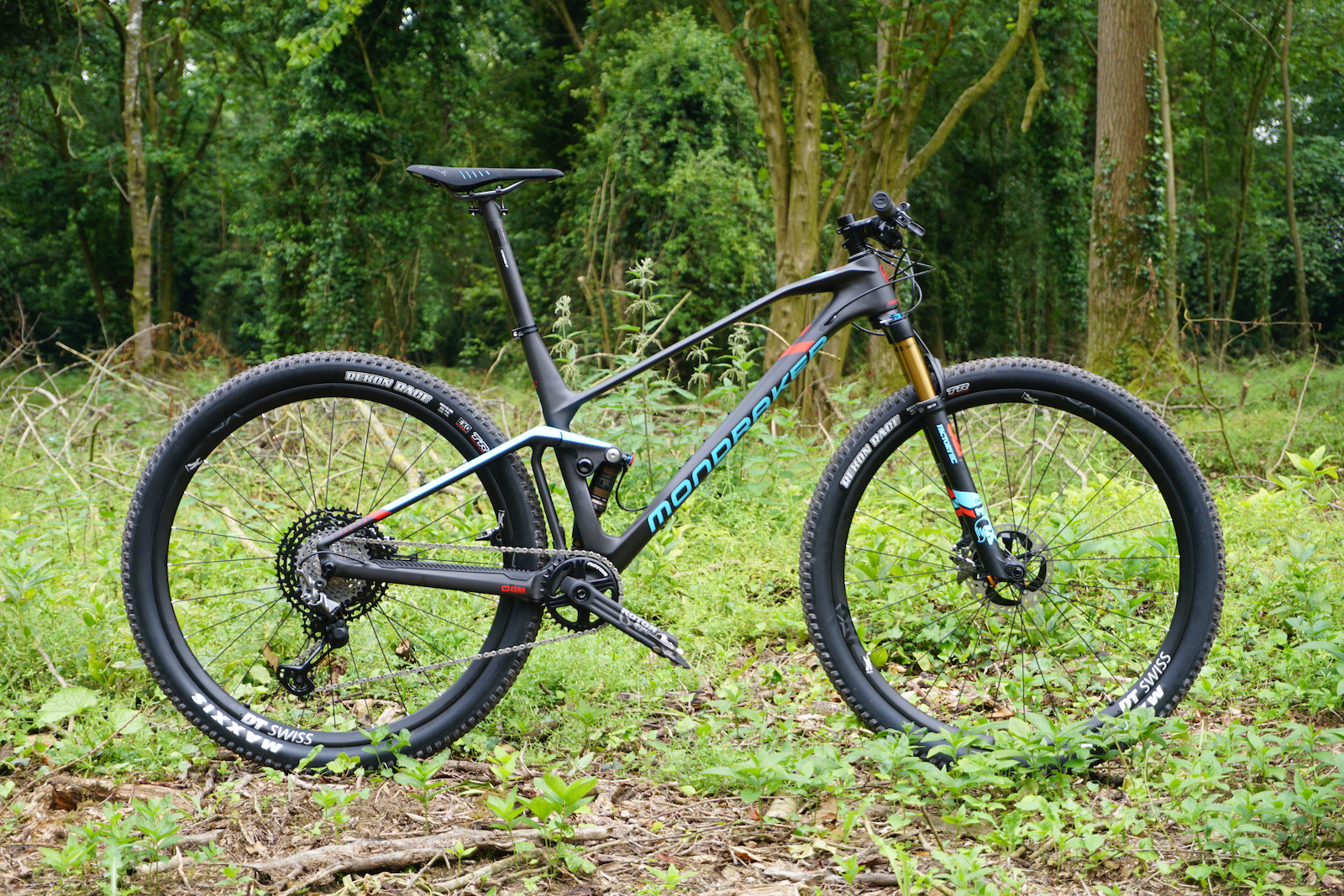
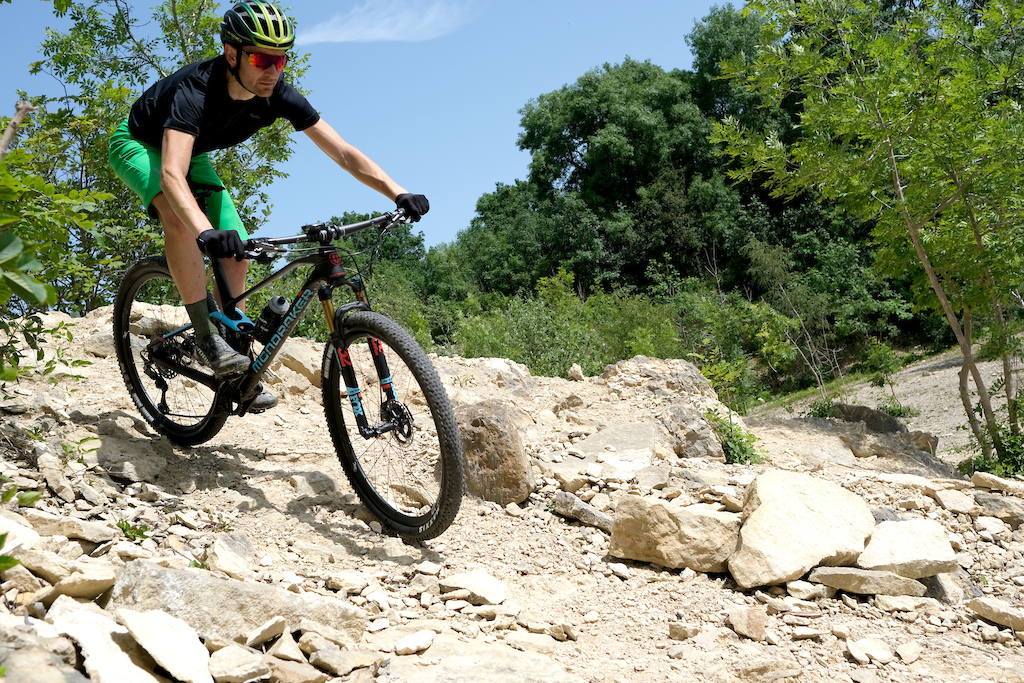


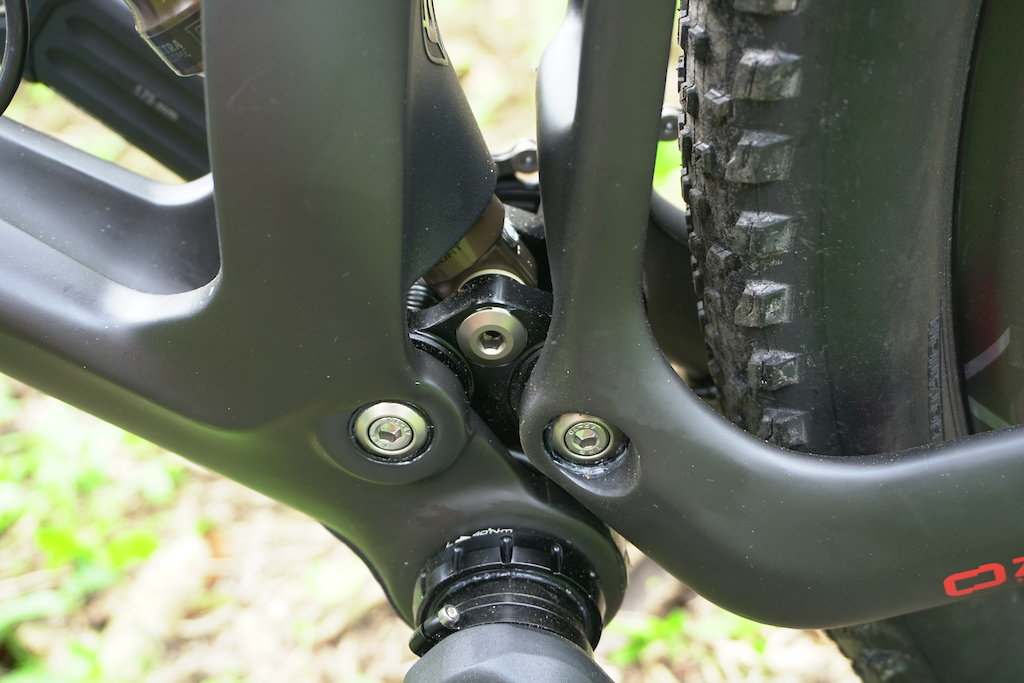

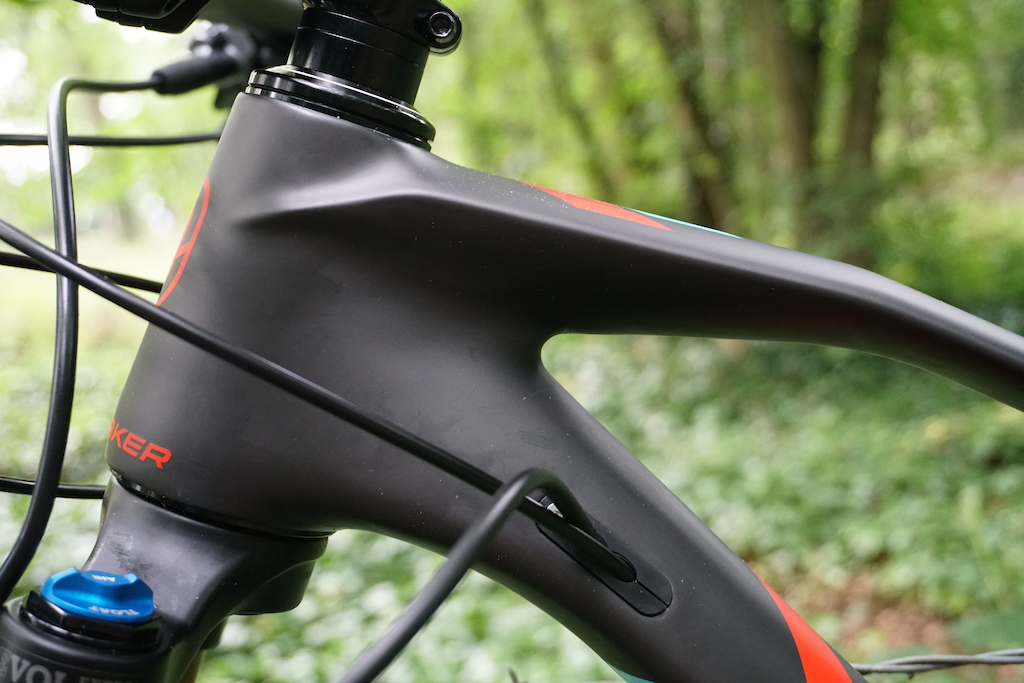
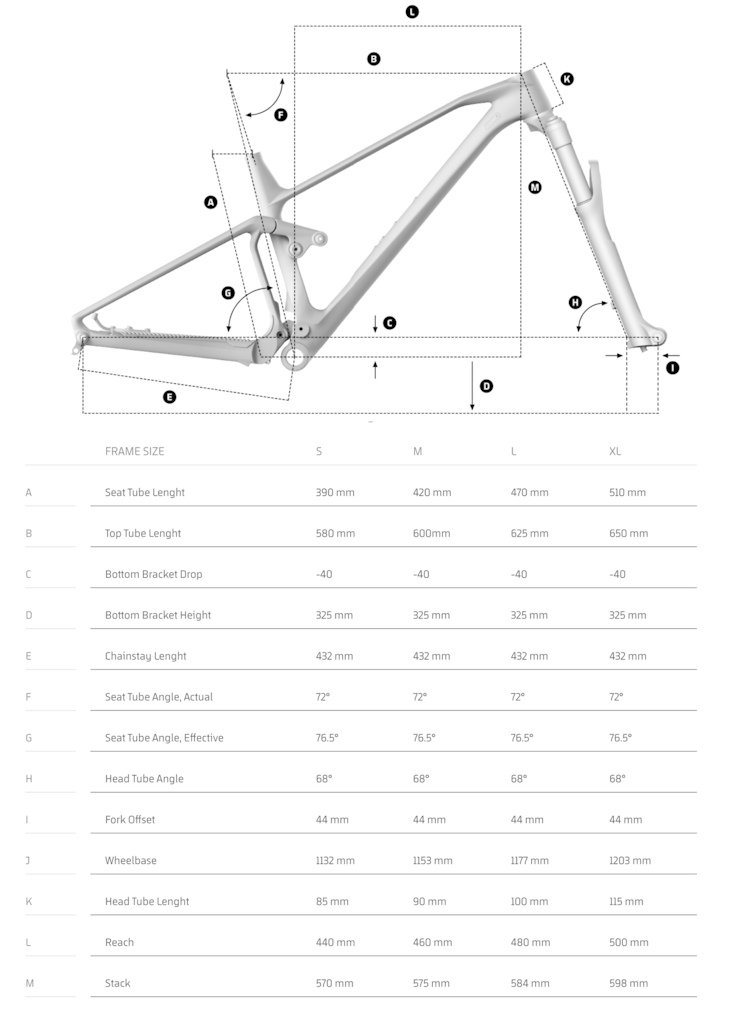


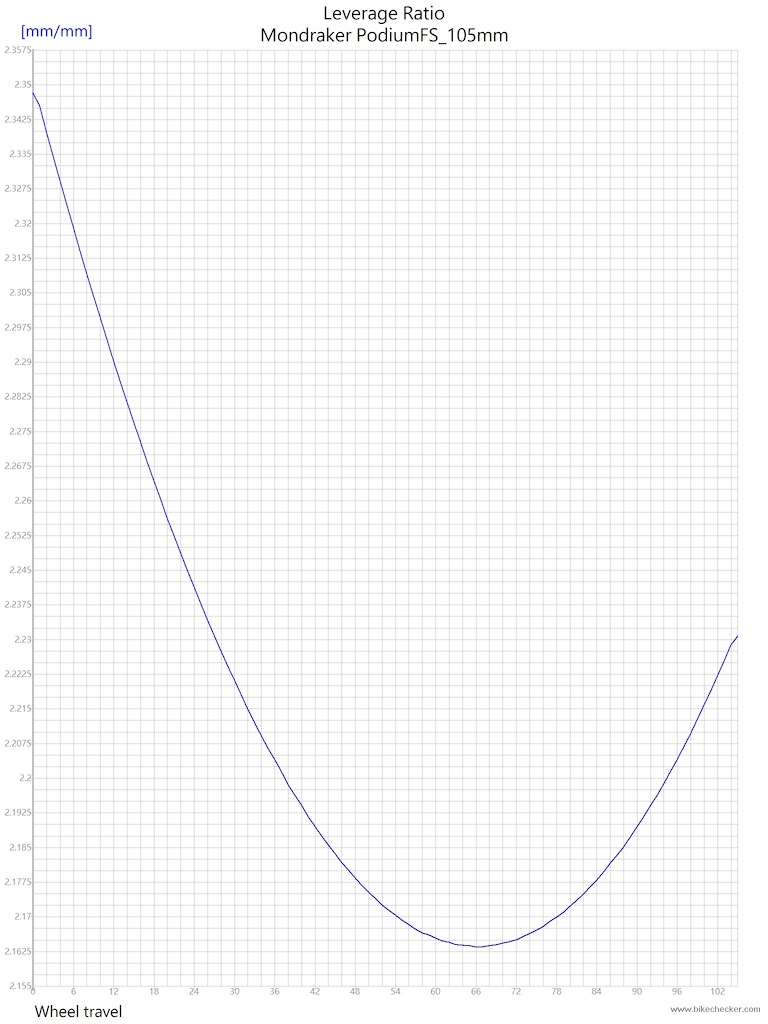

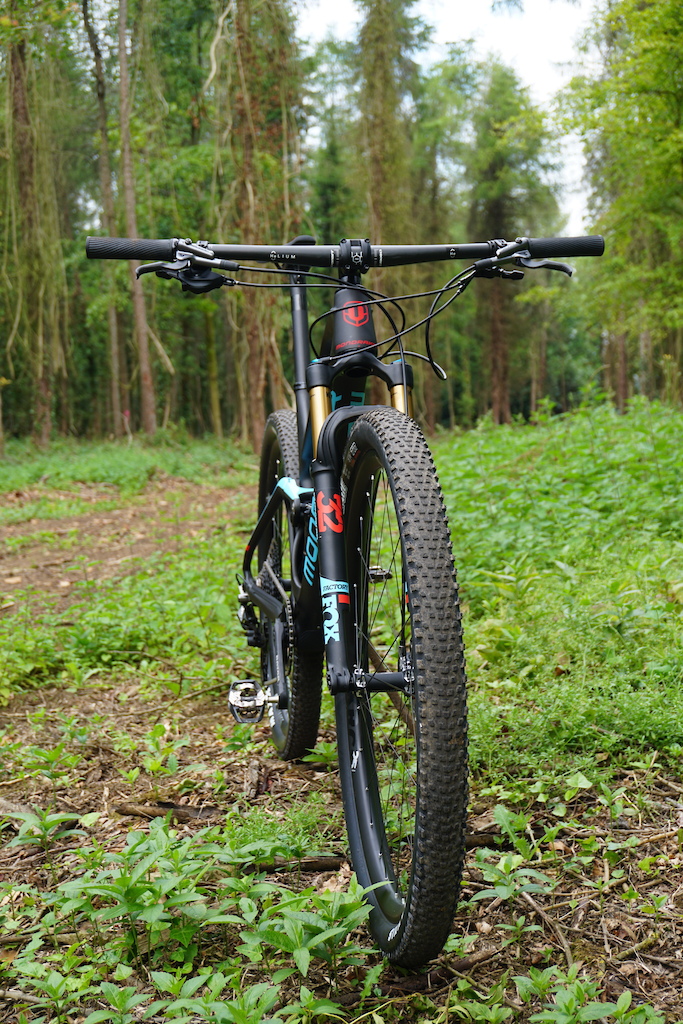

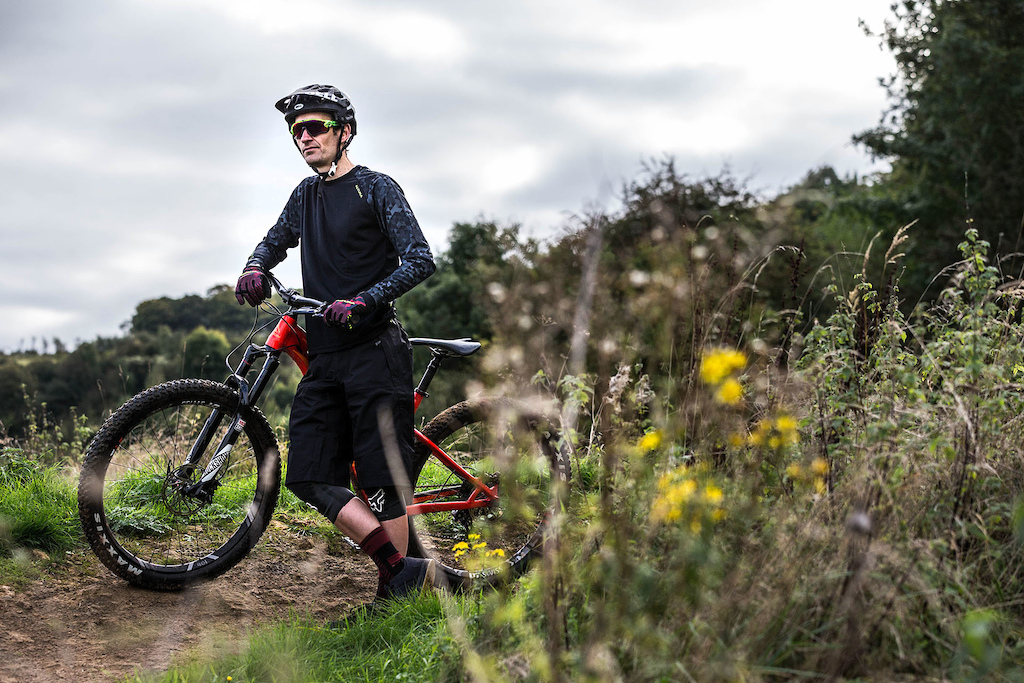


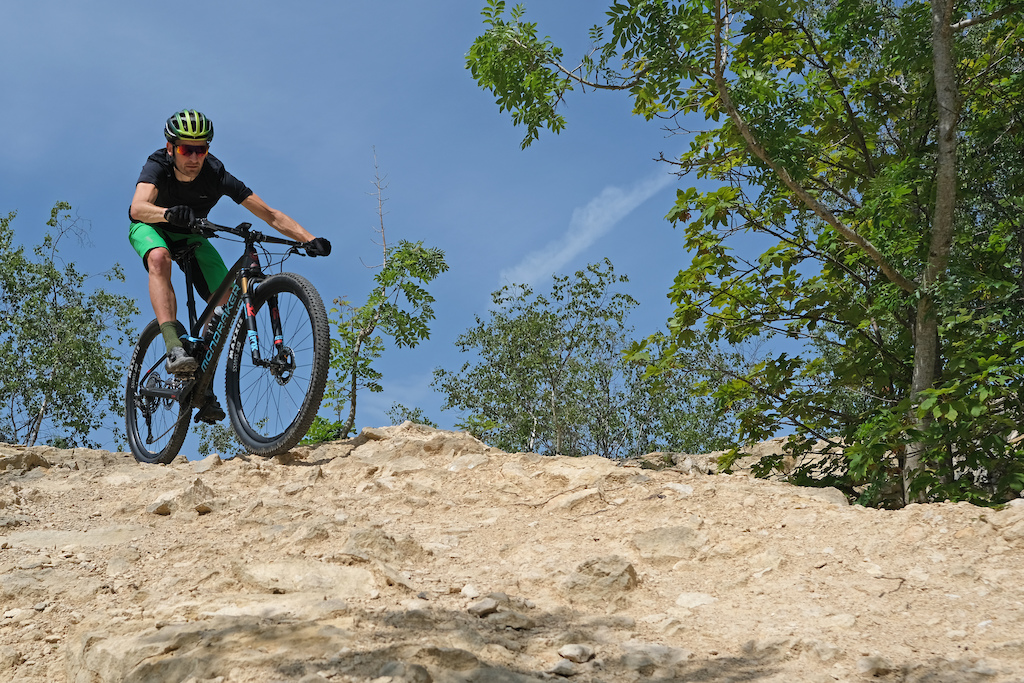


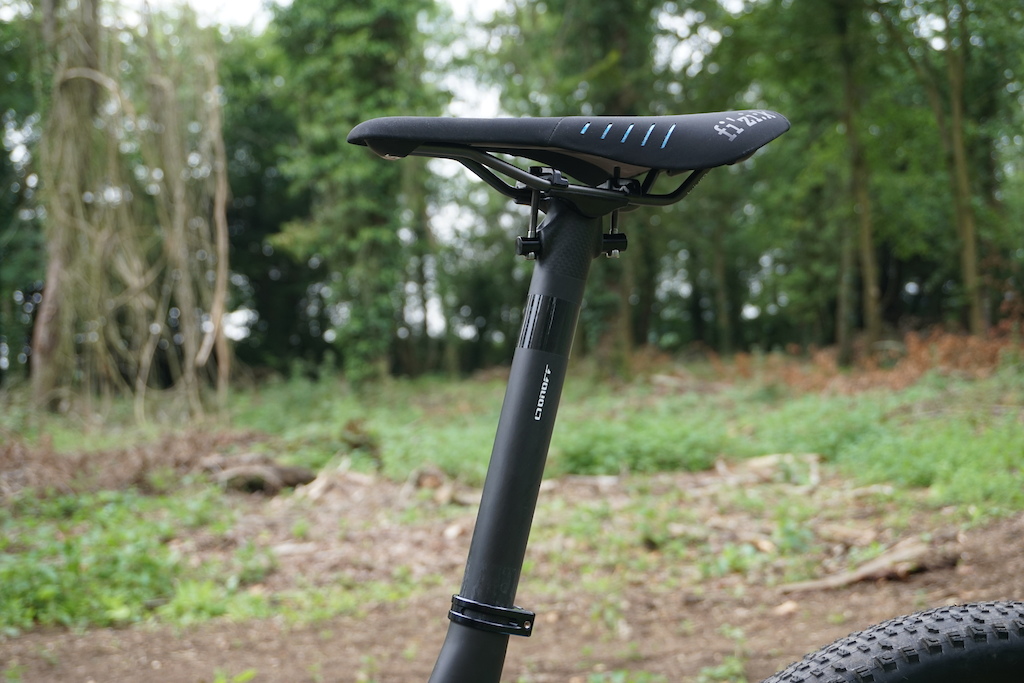


This is very much a "how does a race bike work as a trail bike" story, but then the conclusions are hardly worth writing about. Of course it pedals better than trailbike, of course it descends better than bikes from 5 years ago.
www.bicyclerollingresistance.com
weightweenies.starbike.com
...in all seriousness, the mainstream sites which cover both road and mtb tend to cover XC stuff from a more "serious" perspective. Pinkbike is clearly biased more toward the gravity crowd.
I think this might be the most XC-ish review I’ve read here on Pinkbike. But a negative score for having lockout on a XC bike, lol.
www.tandfonline.com/doi/abs/10.1080/14763141.2016.1176244
jsc-journal.com/ojs/index.php?journal=JSC&page=article&op=view&path%5B%5D=260
commons.nmu.edu/isbs/vol36/iss1/25
Putting yourself in a shit pedaling position because the enduro bros think super long reaches and steep seat tube angles are cool and "climb well" is dumb. XC racing is an endurance sport, you might want to select your STA to put your in the optimum position to make power and avoid injury, not just pick STAs based on the newest trends.
so if you just want a STA as slack as road bikes Like 74-75, just get a Scott or a Spe.
Seeing the results, the 2 deg difference in STA don't seem to make such a big difference.
Also are people not using seatpost with an offset anymore ?
If you start with a 76 SA, your position is at already 73 on that 3 degree climb, with no reduction of seat height. Sure, you maybe a little forward on flat sections, but the average part of the ride when you are seated pedaling is generally climbing as you stand for downhills. So, wouldn’t you want to be closer to that 73 degrees on what we pedal on mostly, the climbs? On a fairly common 10 degree climb, do you want an effective 63 SA?
Additionally, those studies were based on road bike positions which are lower in the handlebars which shifts the muscle engagement to the quads and away from the bigger muscle group of the glutes unless you slide your saddle back. A more upright mtb position engages the glutes/ hamstrings more at the sacrifice of some quad usage, unless you slide your saddle forward. The above muscle engagement is due to weight shifts and balance.
Nino on a road bike:
www.mtbcult.it/wp-content/uploads/2019/06/20144462_226867_670.jpg
Nino on a mountain bike:
reviews.mtbr.com/wp-content/uploads/2018/03/Stage-Racing-900x506.jpg
Another paper, although its too old to be really relevant:
www.umass.edu/locomotion/pdfs/jhms-1998.pdf
Overly aggressive setup doesn’t always equal limited power, hip flexion and back mobility are fairly critical to how much drop you can efficiently run. Not comparing drop to long reach. Hell even a change is saddle can impact power output.
The questions about maximum power within UCI rules is another valid point.
Because you know, science.
Road bike geo is also a compromise made with respect to aerodynamic drag as well as tremendous length of races, it is not applicable to MTB. As to TT (please put triathlon aside, I mean road TT) vs road mass start power delivery, that’s a joke of an argument, anyone can easily see the difference in average speed, you don’t need a bloody lab and professor degree to see how big difference we are talking about. If road races looked like XCO races, that is 1-1,5h, nobody would ride the bloody Madone or Venge. They would rather opt for something looking like Shiv.
Finally geometry and bike fit is an extremely loose sobject and mentioning facts and data in the sea of variables is something I would call rather non intellectual, defying the purpose of mentioning facts.
The reality is you are looking at the position of the BB, grips and saddle. You may fot a pair of 26” as well as 32” wheels and this base formula will remain the same. The positioning of wheel patches becomes free to choose. Reach is exchangeable with stem length until stem becomes too short, which is often when grips end up behind the steering axis. There is no point what so ever for road bikes to have such long stems, when reach can be increased and head angle can be sleckened. Chainstays can be lenghtened. “I want short wheelbase and steep head angle for going 90km/h down Alpine road, head first” said nobody, Ever! But it still happens because the roadie world is too close minded.
In the very same way people jn Garda level XC/gravel world cannot grasp the fact that too steep head angle is bad for taking sharp turns at low speed while they are chanting that they need that for tight maneuvers. Because they have no idea about the technique of taking such turn, that too steep HA gives tendency to tip into the inside of corner and as this happens front decelerates and we get a typical bars to stomach hands on the ground fall because front wheel is too close to riders upper body. The effect is easily observable when doing track stand (that majority of XC/gravelers cannot perform). The steeper the head angle the more body language and brake control is necessary. With long enduro/dh bike you barely use brakes to track stand on flat parking lot and taking your hands off the bars is much less of a problem.
There are diminishing returns to everything but both XC and road bikes waste plenty of estate for wheelbase trying to keep whee patches as close to each other as possible as if (paraphrasing paranoic concept by Chris Porter) as if companies wanted to save money on bike box size
You have no idea about bike fit, just the very fact that you cannot separate location of grips, BB and saddle from all other factors makes you a typical offroad roadie.
Its impossible to be "infinitely more capable." I'msorry, but it just sounds like a gushing ad at this point. The purpose of a review is to help us know how it compares to other bikes. Saying it'sonfonitely better isn't helpful. It feels like someone trying to sell me something. I appreciate the work that goes into these reviews, but it's not helpful to gush and throw buzzwords at us.
Fusion bikes got this idea first back in 2003 or so...
geometrygeeks.bike/bike/mondraker-f-podium-rr-2020 (the XC one)
geometrygeeks.bike/bike/mondraker-f-podium-dc-r-2020 (the downcountry one)
Not that's anything wrong with that seatpost.
A fine description of a fixed post:
"...It worked fine enough with easy saddle adjustments and didn’t cause any issues...."
1- is there a rider weight limit?
2- is the frame designed to take an internal Dropper?